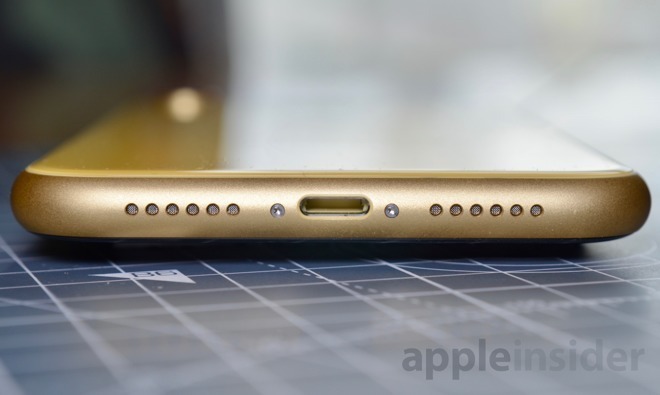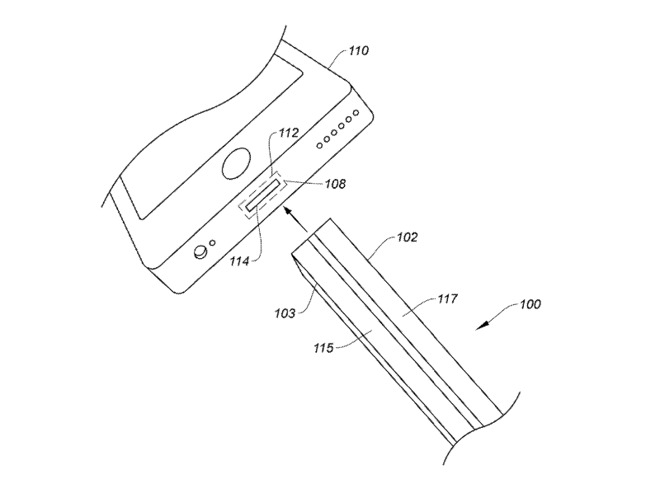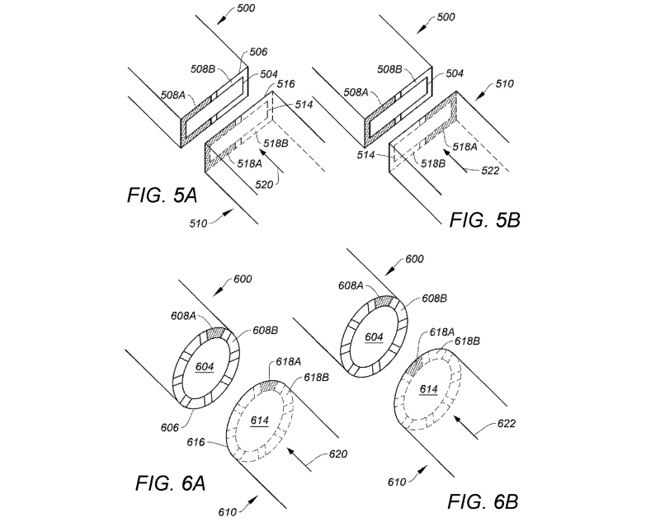iPhone's Lightning port removal could improve water resistance
Apple might ditch the Lightning port in a future version of iPhone. The tech giant is examining ways to allow data transfer via "waveguides," using electromagnetic waves that pass through a cable to a device without needing a physical connection to a port.

The Lightning port and speaker holes of the iPhone XR
Over the years, Apple has made its portable products more resilient to water damage. It officially declared the iPhone 7 and iPhone 7 Plus as the first with IP67 water and dust resistance, raising the bar to IP68 in the iPhone XS, a level expected to be maintained for the 2019 iPhones.
While the company is developing new ways to stop water and dust from getting into its mobile devices, the simplest way to do so is to reduce the number of ingress points, which means sealing up the body by removing ports and other holes. Aside from the needed holes for the speakers and microphones, iPhones are also equipped with a Lightning port.
The Lightning port provides two functions in that it can be used to provide power to recharge the iPhone's battery and can offer a data connection with a Mac or PC, or an accessory. While the charging element can be performed by wireless charging functions offered in current-generation models, a physical data connection cannot easily be replaced, making it tough to remove the port entirely.
In a patent application filed with the US Patent and Trademark Office on Thursday, Apple's "Conductive Cladding for Waveguides" could provide a way for data to be transferred without a physical port.

An example of a waveguide close to attaching to a flat side of an iPhone, where a Lightning port would usually reside
For the purposes of the filing, a waveguide is a structure for funneling electromagnetic waves down a pathway, specifically for those that are not usually able to pass through the atmosphere efficiently, such as millimeter waves. By containing and guiding the millimeter waves, this can allow for data transfers that pass through at tens or hundreds of gigahertz, higher rates than are typically possible with conductive wires.
In order for the waveguides to work properly, they have to be positioned in such a way to match the orientation of their transmission, as well as lining up to transmit correctly to the receiving device.
To solve this, Apple suggests the waveguide created from a core of a solid dielectric material that can conduct radio waves, surrounded by a cladding that includes conductive portions that can allow electrical signals to be transmitted. Rather that for large-scale data transmission, the conductive portions and electrical signals are just used to determine the orientation of the waveguide to the receiving or transmitting device.

The segmentation of different waveguide shapes, and potential orientation differences
By using the conductive portions to determine how one end of the waveguide is attached, the other end can alter how it transmits through the waveguide. While this may be straightforward for a rectangular waveguide cable, it also means the system would work efficiently for a circular cable, which could have many segmented areas for transmission and conductive portions.
To aid alignment, magnets could also be employed to both hold the cable in place and to ensure it is placed correctly by the user in the first place.
Apple applies for patents covering a wide variety of areas on a weekly basis, but while the filings indicate areas of interest for Apple, it does not guarantee the features will appear in a future product or service.
Unsurprisingly, Apple has examined other ways to provide enhanced water resistance to its products.
Patents from 2018 covered a number of ways to prevent water entry via a Lightning-style port, generally by using elements of the connector to create the seal within the port rather than by the port itself having protective elements. Suggestions include rubber rings acting as a gasket, deformable sheathes, tapered connectors, and even a vacuum generator.
In 2015, Apple was looking into the use of self-healing elastomers to completely cover ports, relying on sections of the connector to puncture the material which then reseals upon disconnection.
Apple has also previously explored liquid resistant speaker ports, removing the acoustic elements from the equation in one 2016 patent.

The Lightning port and speaker holes of the iPhone XR
Over the years, Apple has made its portable products more resilient to water damage. It officially declared the iPhone 7 and iPhone 7 Plus as the first with IP67 water and dust resistance, raising the bar to IP68 in the iPhone XS, a level expected to be maintained for the 2019 iPhones.
While the company is developing new ways to stop water and dust from getting into its mobile devices, the simplest way to do so is to reduce the number of ingress points, which means sealing up the body by removing ports and other holes. Aside from the needed holes for the speakers and microphones, iPhones are also equipped with a Lightning port.
The Lightning port provides two functions in that it can be used to provide power to recharge the iPhone's battery and can offer a data connection with a Mac or PC, or an accessory. While the charging element can be performed by wireless charging functions offered in current-generation models, a physical data connection cannot easily be replaced, making it tough to remove the port entirely.
In a patent application filed with the US Patent and Trademark Office on Thursday, Apple's "Conductive Cladding for Waveguides" could provide a way for data to be transferred without a physical port.

An example of a waveguide close to attaching to a flat side of an iPhone, where a Lightning port would usually reside
For the purposes of the filing, a waveguide is a structure for funneling electromagnetic waves down a pathway, specifically for those that are not usually able to pass through the atmosphere efficiently, such as millimeter waves. By containing and guiding the millimeter waves, this can allow for data transfers that pass through at tens or hundreds of gigahertz, higher rates than are typically possible with conductive wires.
In order for the waveguides to work properly, they have to be positioned in such a way to match the orientation of their transmission, as well as lining up to transmit correctly to the receiving device.
To solve this, Apple suggests the waveguide created from a core of a solid dielectric material that can conduct radio waves, surrounded by a cladding that includes conductive portions that can allow electrical signals to be transmitted. Rather that for large-scale data transmission, the conductive portions and electrical signals are just used to determine the orientation of the waveguide to the receiving or transmitting device.

The segmentation of different waveguide shapes, and potential orientation differences
By using the conductive portions to determine how one end of the waveguide is attached, the other end can alter how it transmits through the waveguide. While this may be straightforward for a rectangular waveguide cable, it also means the system would work efficiently for a circular cable, which could have many segmented areas for transmission and conductive portions.
To aid alignment, magnets could also be employed to both hold the cable in place and to ensure it is placed correctly by the user in the first place.
Apple applies for patents covering a wide variety of areas on a weekly basis, but while the filings indicate areas of interest for Apple, it does not guarantee the features will appear in a future product or service.
Unsurprisingly, Apple has examined other ways to provide enhanced water resistance to its products.
Patents from 2018 covered a number of ways to prevent water entry via a Lightning-style port, generally by using elements of the connector to create the seal within the port rather than by the port itself having protective elements. Suggestions include rubber rings acting as a gasket, deformable sheathes, tapered connectors, and even a vacuum generator.
In 2015, Apple was looking into the use of self-healing elastomers to completely cover ports, relying on sections of the connector to puncture the material which then reseals upon disconnection.
Apple has also previously explored liquid resistant speaker ports, removing the acoustic elements from the equation in one 2016 patent.

Comments
They did that on the Apple Watch (except for the "diagnostic port" which is hidden and of highly restricted use) and its a matter of time before they do it on the iPhone as well. (Actually the AppleWatch has more of a need of a connector than the phone because it would enable the watch to connect to and use a functional watch band.)
While that may mean some restrictions in functionality, Apple will no doubt make the leap just as they did for the headphone jack -- in order to provide other benefits.
Think about it: How much and what do we use a lightening connector for?
-- Charging? Old school
(That said, it remains a mystery to me why Apple continues to use the "smart connector" on its iPadPros.)
You need it if your phone is taking a long time to download software updates.
You need it if you are backing up a large amount of data quickly and don’t have time to wait 1+ hours.
You need it if you need to put the phone in DFU or recovery mode.
The diagnostic port on the watch makes it impossible for a customer or an Apple store or authorized dealer restore the firmware. They have to ship the watch out to a repair facility.
I doubt that the lightning port is the #1 cause of liquid damage, most of the time, the root cause is liquid seeping from the little speaker at the top of your iPhone (receiver). Appleinsider should follow up with their contacts who are technicians at Apple to confirm.
Wireless charging is still slower than physically plugging in.
Smart connector is used for powering keyboards rather than using a Bluetooth keyboard. You have less things to charge and the keyboard doesn’t use up hardly any of the ipad’s battery.
But, reading the objections here to eliminating the lightening (or potential USB-C) port on the iPhone, I think most of them are based on TODAY's conditions and technological capabilities. In 5 years, 10 years, those conditions and abilities will be far different than today.
The basic form factor and technology of the smart phone has essentially been set. But, the way it interacts with its environment will be the path to how it progresses in the future. I see mobile devices becoming increasingly mobile and (primarily) stationary devices like desktops, laptops and tablets becoming more versatile.
And the article seems to suggest that the "waveguide" is a relatively non-flexible device, so maybe optical is possible in that scenario. But would the magnetic alignment mechanism be able to create a sufficiently stable connection for data transfer to take place?